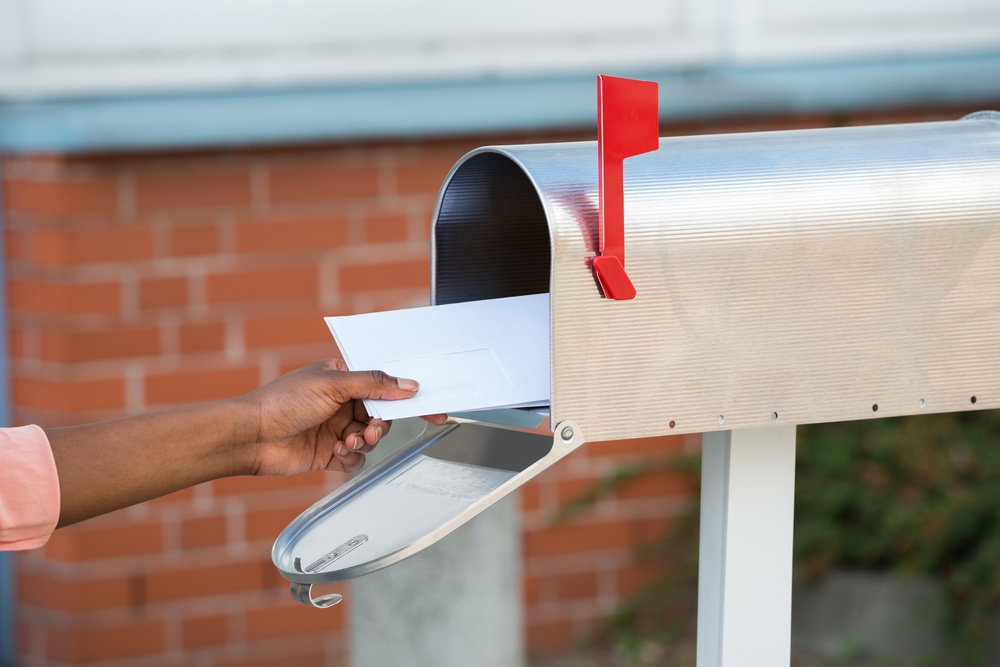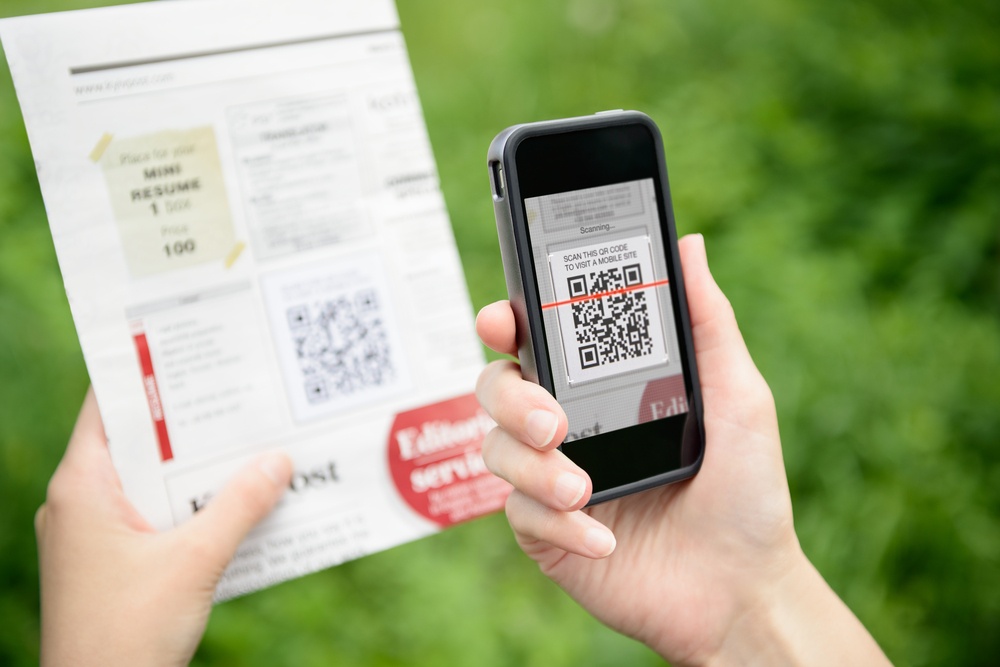
Did you know that relevant direct mail influenced 83% of purchases in 2020?
While there have been debates over the effectiveness of direct mail marketing (especially compared to the shiny, new channels that have opened up in digital marketing), the Covid-19 pandemic has proven that direct mail is still a powerful tool in your marketing arsenal. In fact, recent market research found that 30% of shoppers are spending more time than they did before COVID-19 reading direct mail promotions.
In a world in which consumers are purging overcrowded email inboxes, direct mail is more impactful than ever.
You may think that you have your direct mail strategy down, but shifts in generational marketing preferences, evolving marketing strategies, and advancements in data collection and technology mean that your current strategy might need an update.
Read on to understand the key methods that successful businesses use when designing direct mail campaigns.
Link Tech With Direct Mail
Just because direct mailing is alive and well doesn’t mean you should just print out a flyer at random and expect success. Truly successful direct mail relies on a solid foundation built from data analysis and smart technology. In this article, we outline ways for you to use your data to create actionable insights to guide your marketing strategy and optimize your campaigns.
1. Understand Your Audience
Understanding your audiences’ preferences, communication styles, and behaviors — both online and offline — is cruciall. In this smartphone-distracted world, advertisers only have a few crucial moments to connect with their target audience.
Leveraging first- and third-party data (e.g. firmographic or household data, purchase-behavior data, intent data, and channel-preference data) will allow you to understand the needs and wants of your audience, personalize creative content that appeals to them, and find them on the channels they are likely to engage with.

Research from Cintell found that businesses that exceeded their lead generation and revenue goals were 2.3 times more likely to have researched the motivations of their buyers and 1.6 times more likely to understand the fears and challenges their buyers face.
The information that these companies used to succeed wasn’t anything special or extraordinary; it was simply the customer data available. The difference is that these successful companies put in the effort to leverage that data into an understanding of their audiences.
The customer data you gather will enable you to efficiently segment your audience and help personalize your interactions with each customer you look to convert into a loyal subscriber.
2. Segment Your Audience
Insights into your audience — powered by data — allow you to segment it, align targeted messaging, and develop creative content that will appeal to each segment. It’s quite a lucrative strategy — brands can achieve 3–5% more sales with segmented campaigns than by non-segmented campaigns.
These new audience insights should enhance your prospect and customer models and allow you to determine which segments will benefit the most from a direct mail campaign (and what type of a direct mail campaign).
3. Use CRM Software to Bridge the Identity Graph Gap
Anonymous web visitors and duplicate account entries can leave holes in your database. However, direct mail can help you connect the dots between online and offline personas. Here’s how you can activate your customer relationship management (CRM) software to build a complete customer-identity graph:

- Turn anonymous web traffic into postal address leads with IP retargeting or pixel to postal.
- Turn phone numbers and email addresses into postal address leads with reverse-appends.
- Build hyper-targeted prospect models by pairing key attributes of your best customers with third-party data.
- Turn anonymous foot traffic into postal address leads with geofencing.
- Tap into your CRM for segmented win-back, cross-sell, upsell, and client-appreciation mailings.
4. Take an Omnichannel Approach
Coordinating print and digital is one of the best ways to optimize customer experience and your return on investment (ROI). An omnichannel campaign is more than advertising across multiple channels; it’s about coordinating messaging so that it feels seamless to the consumer.
When launching a direct mail campaign, ensure that it’s paired with a consistent and repetitive digital presence (e.g., ads on Facebook, Instagram, email, CTV, or YouTube).
This coordinated, omnichannel approach to marketing can help increase a brand’s impact and, working in tandem, direct mail followed by email can then increase response rates by up to 63%.
5. Leverage Digital Tactics To Drive Direct Mail Engagement
The use of QR codes and augmented reality (AR) on mailers is not a new practice, but it has been gaining popularity. A QR code is a versatile tool – your audience can research, review, and even convert right from their phones simply by scanning a code. In 2020, 1.5 billion orders were done through QR codes. That figure is expected to reach 2.2 billion by 2025, according to Juniper Research.

QR codes can be used to lead mail recipients to videos, personalized landing pages and promotions, live chats, and more. Depending on your business, you can create a 3D environment for product sampling, provide a 360-view of a product line, or even offer a vehicle test drive. For example, Tesla offers interested buyers the chance to scan a QR code and fill out a short form to request a ‘touchless’ (aka, COVID-safe) test drive.
This virtual-yet-physical experience heightens brand trust and purchase confidence, thereby increasing your conversion rate and campaign success.
6. Automate Triggered Direct Mail
If a customer fills out a website form or abandons an online shopping cart, you can set up a system that triggers a direct mailing, a marketing tool that enables you to reach your audience based on their actions or personal data.
Triggered mailings can also activate on offline events. For example, a customer’s birthday can prompt the mailing of a coupon, or an insurance policy nearing its expiration date can trigger a mailing with renewal details.
These direct mailings make customers feel appreciated (you put in the effort and funds to mail a birthday card!), and they help customers to form a stronger bond with your company — more than 80% of consumers say they want to be treated like a person and not a number.
Five Tips for Optimizing Your Direct Mail Campaigns
As consumers live more through screens, marketers must become adept at using direct mail as part of the omnichannel experience. Here are five ways to do so.

1. Harness the Power of Targeting
Targeted marketing is power. Advancements in data science mean you can create prospect audiences that resemble your highest value customers, then craft the perfect offer targeted right to that ideal customer.
E-commerce fitness company Zogics launched a postcard campaign targeted toward reactivating their prospects who stopped responding to email marketing. The results: A 500% ROI and an order volume increase of 140%.

2. Personalize Your Content
Speaking directly to a specific (type of) customer creates a bond, and interest in your brand soon follows. As your direct mail evolves from “junk” to wanted, you’ll notice a jump in your conversion rates.
KitKat sent personalized mailers that resembled a missed package notification to potential customers. The tongue-in-cheek mailer, combined with a call to action (CTA) to collect a free candy bar, brought attention to their newest ‘chunky’ KitKat bar and gave their loyal customers a reward — free candy!

3. Keep It Simple
Concise copy combined with a clear CTA is a recipe for success. With print, you want to direct readers to a quick and easy action right away, so a simple, clear call to action is vital.
For example, HelloFresh has invested heavily in direct mail marketing since its inception in 2011. It frequently mails coupons and offers which feature a clear, compelling CTA.
HelloFresh’s efforts got its name out there. Then, during the Covid-19 pandemic, consumers in heavily-populated areas like New York City needed food delivery — and HelloFresh was right there at the top of their minds (and mailboxes).
As a result, HelloFresh experienced a 107% increase in revenue in 2020 compared to the year prior.

4. Create a Unique Experience for Your Prospects
Think outside the box with your direct mail pieces. Interactive mailers, puzzles, interesting textures, zip strips, and magnets, etc. will catch the attention of your audience and make potential customers much more likely to interact with your mailers (not just toss them into the trash).
Nike created an unforgettable experience for its audience when it mailed customers shoeboxes that resembled a stadium when opened (including a sound component — the roaring of a crowd).
5. Build Your Ideal Audience
Building an audience that reflects your highest value customers is going to give you the best bang for your buck. The primary objective of a custom audience is to allow brands to target their ideal customers and reach prospects that are most likely to convert. When you create a custom audience defined by third-party data, you can:
- Identify your existing best customers
- Employ advanced statistical analysis and custom modeling to identify prospect households who “look like” your best customers
- Reach these “best” prospects through a cross-channel media strategy designed to engage and convert these prospects to customers
For example, Data Axle recently put together and tested a custom-built audience for a women’s apparel cataloger. We used our analytics to examine the client data to understand their customer profile. By matching customer data against Transactional & Consumer data, we generated a match rate report to learn the characteristics by demographics (age, income, presence of children, etc.), product purchase history, spending habits, lifestyles, and more.
In this case, middle-aged, affluent women with active lifestyles interested in fitness, fashion, travel, and donating to health causes were the best target for the cataloger. From there, we use predictive modeling to identify lookalikes/best prospects who are most likely to respond to the direct mail campaign.
After the report profile we build a model and confirm the customer profile and select a lookalike subset of the database to score and rank, so tests can be pulled in rank order. Companies that are constantly listening to their prospective customers and changing to better serve them will reap the rewards of their efforts.
Ready to optimize or implement your direct mail strategy?
Data is your best friend when looking to optimize your marketing plan. While emails and social media are great tools to reach your audience, keep in mind that ‘old habits die hard.’ With direct mail, you will show your consumers that you care for them, and take your relationships with subscribers to new heights. Your quest to enhance your consumer loyalty just got a whole lot easier.


